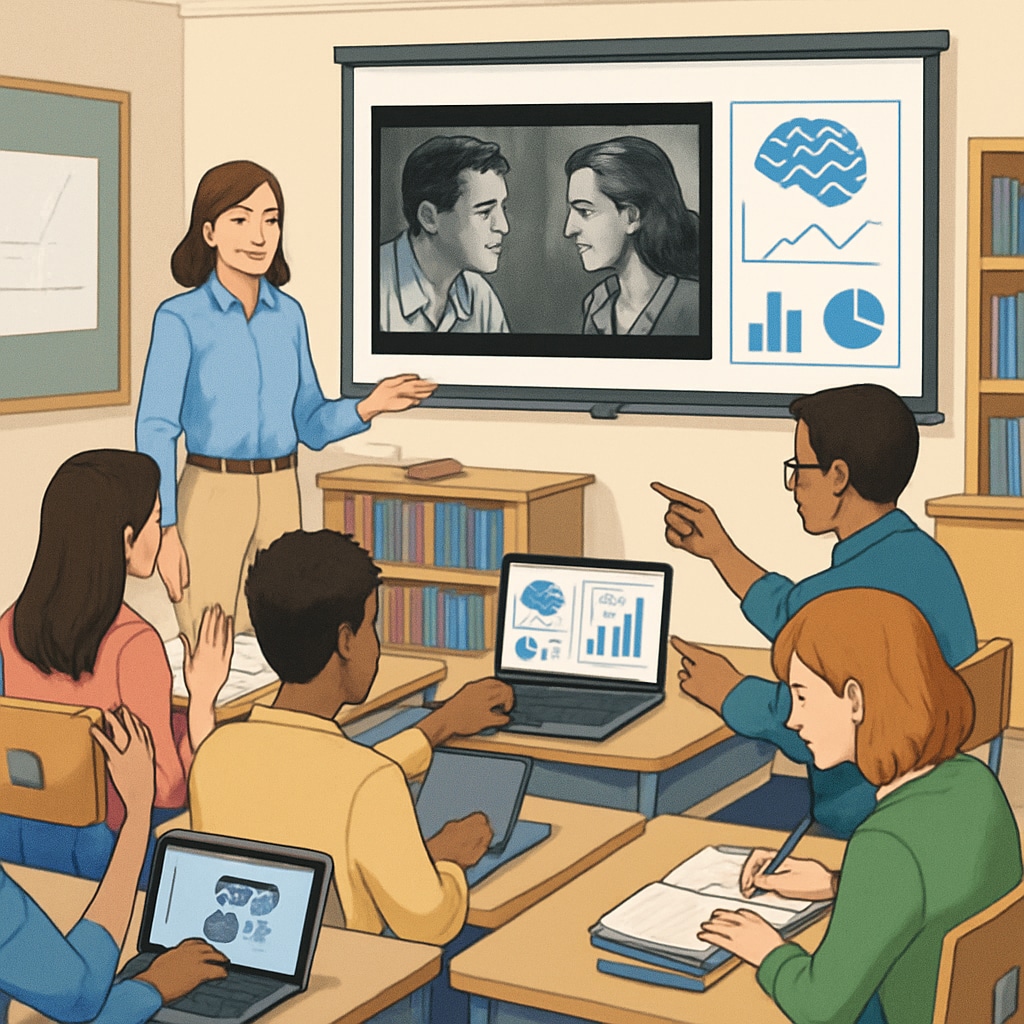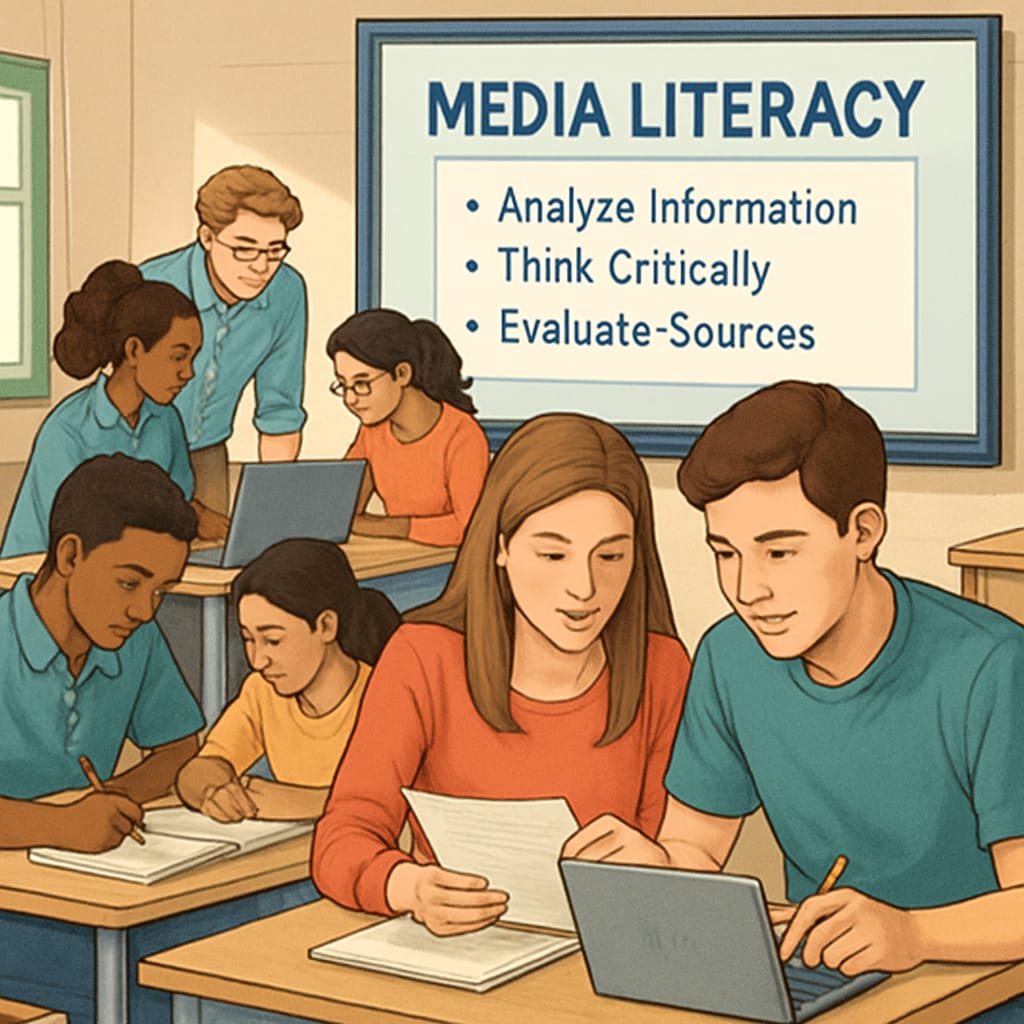In today’s digital age, AI writing prompts for media literacy and educational resources have become essential tools for empowering high school students. These innovative prompts are designed specifically for grades 9-12, offering structured creative writing activities that enhance students’ ability to critically analyze films and other media. By fostering critical thinking and visual storytelling skills, this resource not only benefits students but also provides educators with a practical approach to integrating AI into media education.
How AI Enhances Media Literacy in High Schools
Media literacy is a crucial skill for the modern world, especially as students are constantly exposed to visual and digital media. AI-powered writing prompts create opportunities for deeper engagement by guiding students through structured analysis. For example, prompts might ask students to reflect on how cinematography influences emotional tone or to examine the cultural implications of a film’s narrative.
- Critical Thinking: AI prompts encourage students to question and interpret the messages embedded in media.
- Visual Storytelling: By analyzing elements like lighting, camera angles, and symbolism, students develop an appreciation for visual narratives.
- Creativity: Writing exercises inspired by AI can spark creative discussions and interpretations.
These processes help students move beyond passive consumption of media, transforming them into active, critical viewers who understand the influence of storytelling techniques.

Classroom-Tested AI Writing Prompts for Film Analysis
One standout feature of these AI resources is their classroom-tested nature. Educators have successfully implemented them to engage students in meaningful discussions and activities. Some examples of effective prompts include:
- Character Analysis: “How does the protagonist’s journey reflect broader societal challenges?”
- Visual Techniques: “Identify three visual techniques used in the film to convey mood.”
- Cultural Connections: “Discuss how the film’s setting contrasts with current events in real life.”
These prompts are adaptable across various genres, allowing educators to tailor activities to suit their classroom goals. In addition, they serve as an excellent springboard for collaborative projects, debates, and independent research.

Integrating AI into Media Education: Practical Tips for Teachers
For educators looking to integrate AI into their classrooms, this set of writing prompts offers a straightforward and impactful solution. Here are some practical tips:
- Start Small: Introduce one or two prompts per week to familiarize students with the process.
- Encourage Peer Collaboration: Use prompts as a basis for group discussions and projects.
- Leverage Technology: Pair AI prompts with multimedia tools such as video editing software to deepen learning.
By following these strategies, teachers can seamlessly incorporate AI into their curriculum, making media literacy an engaging and relevant subject for students.
In conclusion, AI writing prompts for media literacy and teaching resources provide an innovative way to empower high school students. By fostering critical thinking, enhancing visual storytelling skills, and offering practical tools for educators, these resources transform how media education is delivered. As a result, students gain the ability to navigate and analyze the complex media landscape of the 21st century with confidence.
Readability guidance: This article uses short paragraphs and lists to make key points accessible. It avoids lengthy sentences and passive voice, ensuring clarity for both educators and students.


